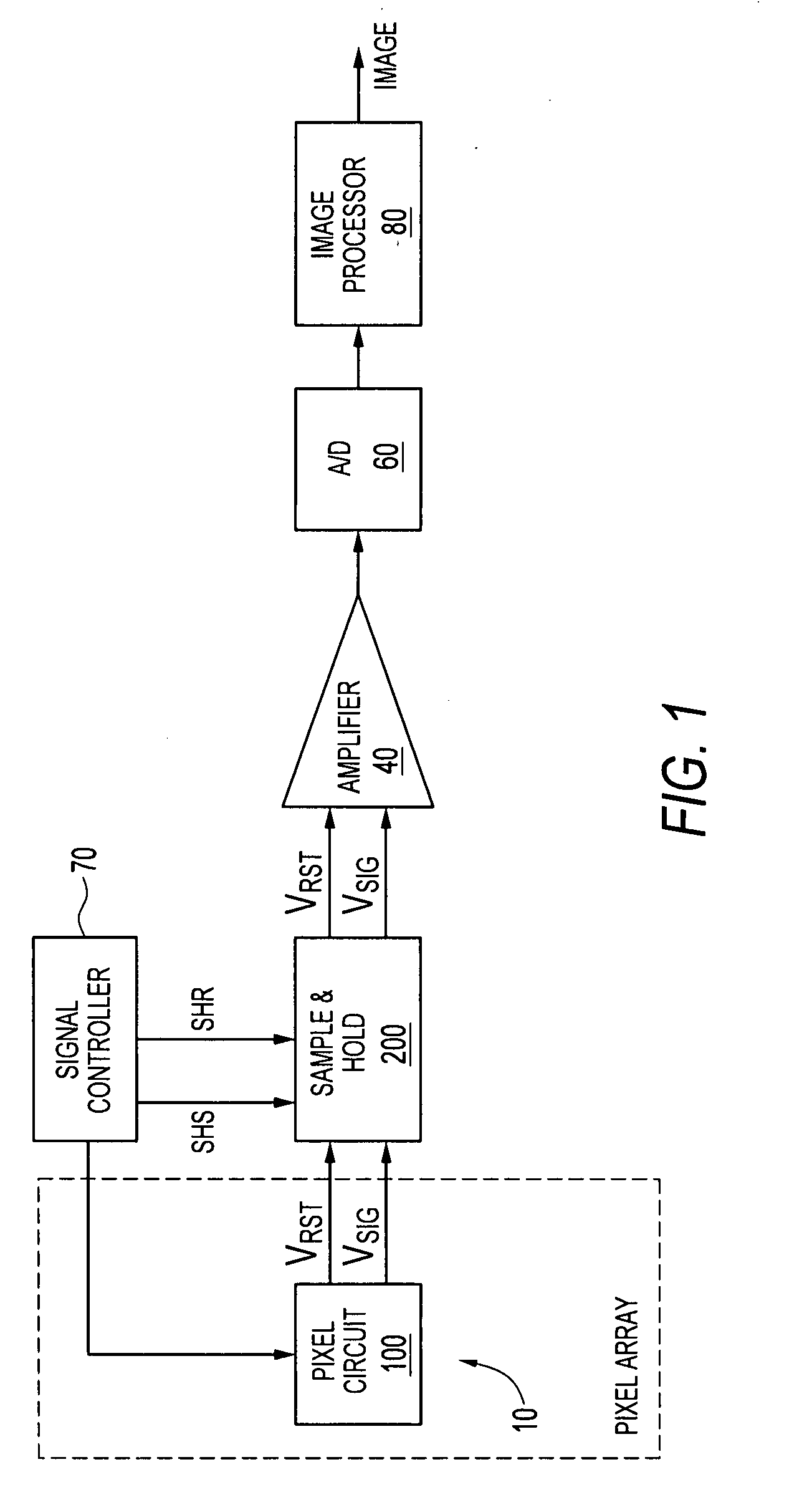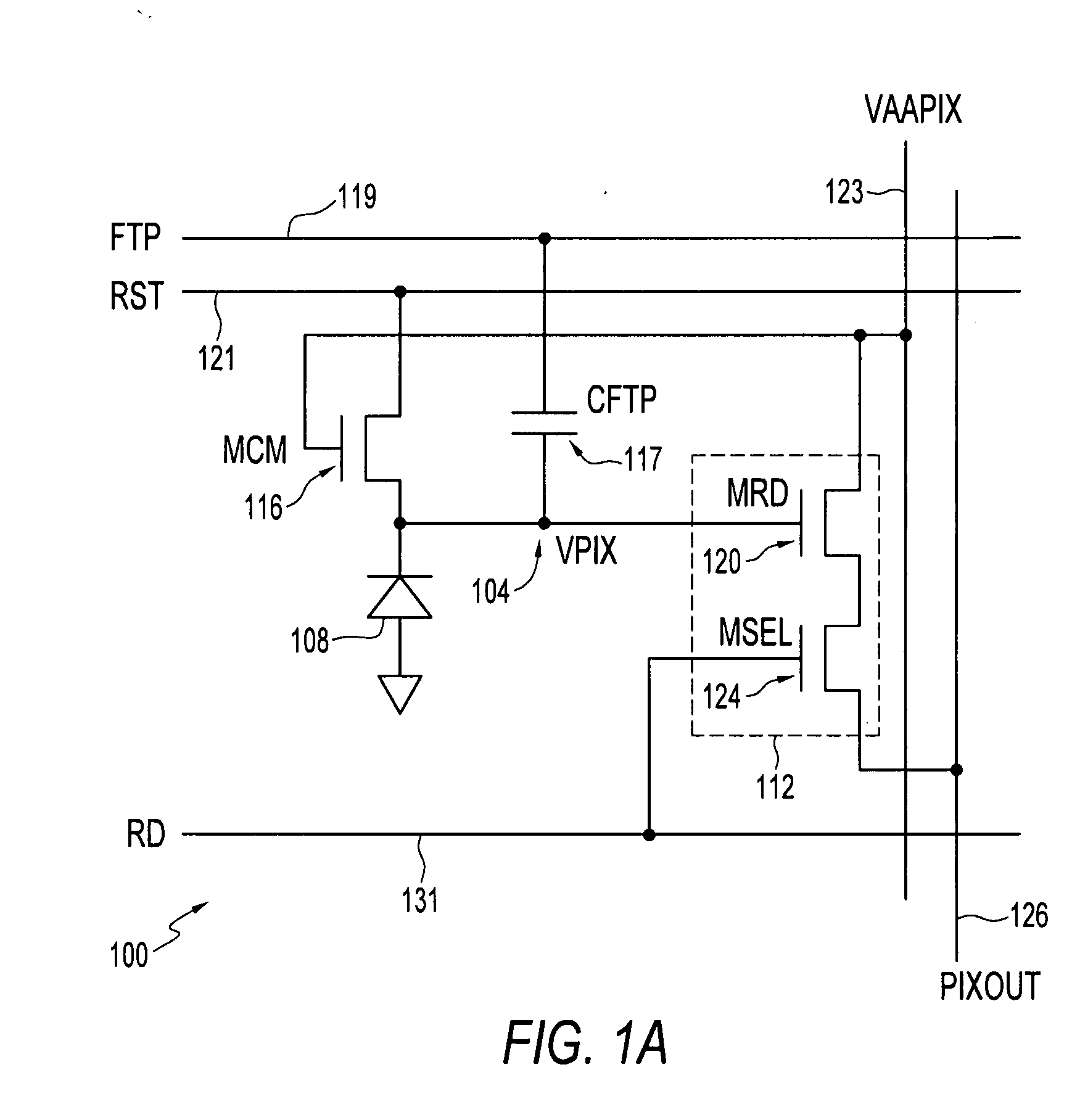Wide dynamic range active pixel with knee response
a knee response technology, applied in the field of wide dynamic range active pixel with knee response, can solve the problems of large variation in the represented signal, fixed pattern noise in the output image, active pixel sensors, etc., and achieve the effect of reducing the noise of the ftp line, less noise, and reducing the photo conversion gain of the pixel circui
- Summary
- Abstract
- Description
- Claims
- Application Information
AI Technical Summary
Benefits of technology
Problems solved by technology
Method used
Image
Examples
Embodiment Construction
[0042] Embodiments of the present invention are employed in a CMOS imaging device generally illustrated in FIG. 1 by reference numeral 10. The imaging device includes an array of pixels arranged in rows and columns with each pixel having a pixel circuit 100, each pixel being associated with a column line to which all pixels of that column are connected, the pixels being selected row-by-row. The pixel circuit 100 provides a reset signal VRST and a pixel image signal VSIG as outputs during a reset and integration period, respectively, which are captured by a sample and hold circuit 200 associated with that column in response to sampling signals SHS (for the image signal) and SHR (for the reset signal), respectively. The sample and hold circuit 200 passes the reset signal VRST and image signal VSIG of a pixel circuit 100 to an amplifier 40 which in turn provides a signal representing the difference between the reset signal and pixel image signal (VRST−VSIG) as an output. This differenc...
PUM
 Login to View More
Login to View More Abstract
Description
Claims
Application Information
 Login to View More
Login to View More - R&D
- Intellectual Property
- Life Sciences
- Materials
- Tech Scout
- Unparalleled Data Quality
- Higher Quality Content
- 60% Fewer Hallucinations
Browse by: Latest US Patents, China's latest patents, Technical Efficacy Thesaurus, Application Domain, Technology Topic, Popular Technical Reports.
© 2025 PatSnap. All rights reserved.Legal|Privacy policy|Modern Slavery Act Transparency Statement|Sitemap|About US| Contact US: help@patsnap.com



